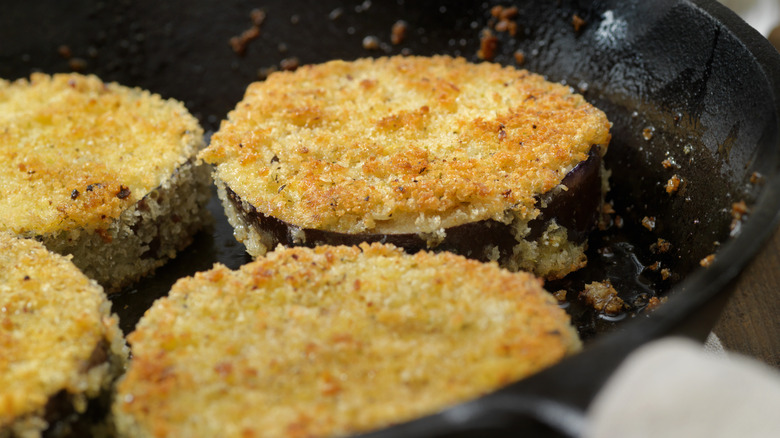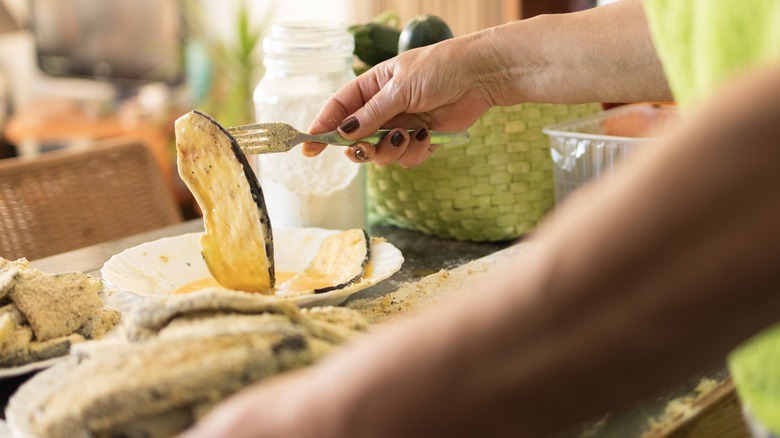How To Prevent Overcooking Fried Eggplant
Eggplant is a delicious and satisfying vegetable that can easily become the star of a dish, and there is no better way to prepare it than frying. Doing so can be a challenge, though, as fried eggplant cooked incorrectly can end up a greasy, soggy mess. The solution? Give your eggplant a proper crust.
While there are many varieties of eggplant, they all share a common trait: soft and porous flesh. This means that, no matter your choice of eggplant, the vegetable will have a tendency to act like a sponge during cooking. If you toss it into a large amount of oil without adequate preparation, your eggplant will simply suck the oil up into itself, ruining the texture and flavor by making it taste of nothing but what it was cooking in. Crusting your eggplant prior to frying prevents this by creating a protective barrier that stops the flesh from absorbing excess liquid. As an added bonus, it contributes extra flavor and texture to what is already a tasty dish.
The best ways to crust eggplant
There are several ways to create a nice crust for your fried eggplant. The first, and most traditional, is by using eggs and breadcrumbs. Prepare a breading station by setting up one bowl with breadcrumbs, one bowl with beaten eggs, and one pan to hold the ready-to-cook eggplant. Dip your eggplant pieces into the beaten eggs and then into the breadcrumbs, making sure every side of the vegetable is covered.
For an extra strong crust, repeat this process once more by dipping the already breaded piece back into the eggs and then into the breadcrumbs a second time. Your eggplant will then be ready to fry. You can also make your dish accessible to those with gluten intolerance by swapping out the breadcrumbs for almond flour. Finally, if you find traditional breading to be too heavy for your taste, you can also create a sort of pseudo-crust by searing the outside of the eggplant before cooking it further. This will crisp up the outer layer and lessen oil absorption as a result.

